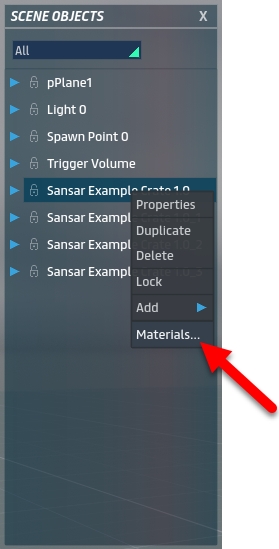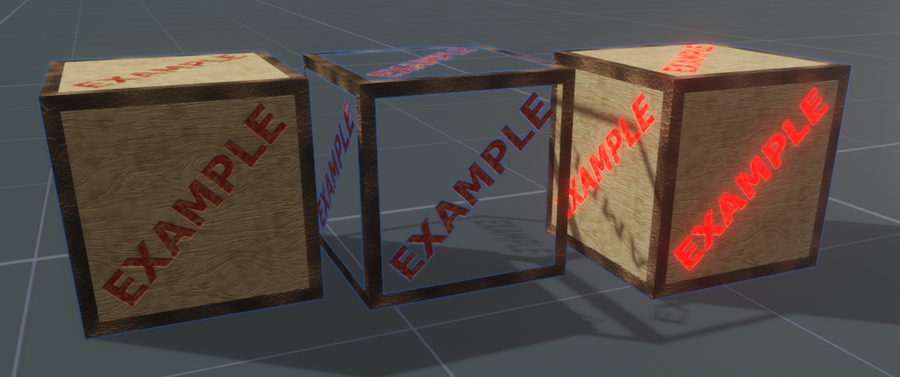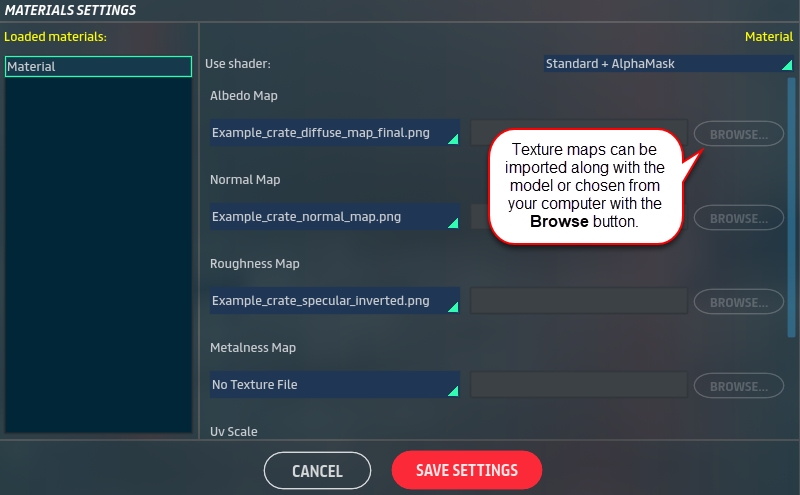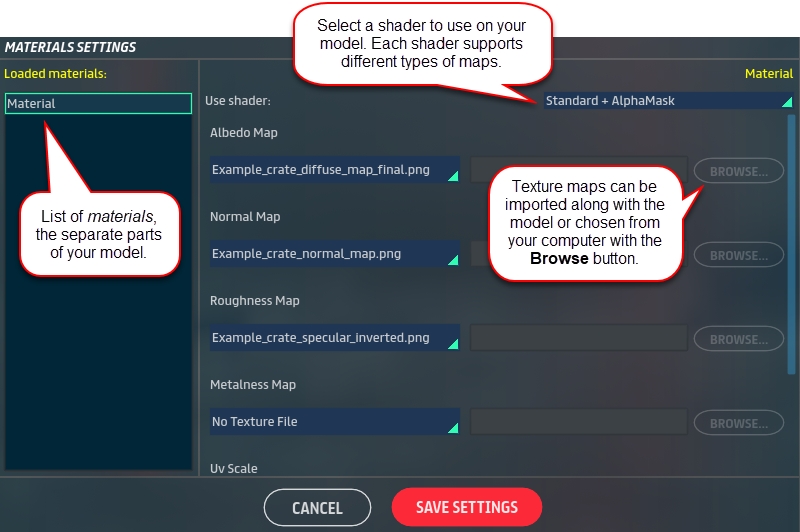Materials editing and shaders
Materials editing and shaders
Materials editing and shaders
Instead of using the Phong shader in your 3D modeling tool, you can use the Materials Settings panel to apply shaders and texture maps to objects.
Accessing Materials Settings
Access Materials Settings when uploading an object in edit mode
Click Import > 3D Model in the top toolbar. See Uploading items in Sansar.
When the Import 3D Model panel appears, you will need to select a .fbx file first to upload. Under 3D model file, click Browse and choose a 3D model (.fbx or .obj) from your computer.
Once a file is selected, click the Materials Settings button to access the Materials Settings panel.\

The upload panel once a .fbx file has been selected from your local drive.
Access Materials Settings for an object that is already in a scene
You can access Materials Settings on objects that have been placed in a scene. Note that you cannot currently take objects from a scene back into your inventory, so there is no way to save and reuse changes you make to an object in this way:
Find the object in the Scene Objects panel.
Right-click the object's name and choose Materials...
Note: When changing materials settings for an object that is already in a scene, those changes are previewed on the object. The changes are reverted if you close the Materials Settings panel by clicking Cancel.

Accessing the Materials Settings panel for an object that is already in the scene.
Materials Settings panel overview
Loaded materials
The Loaded materials list shows the materials applied to the model at the time of upload. If no materials are assigned, a single default material is applied to all parts of the model. Select each material to assign a shader and texture maps to each.
Shader Setting
The Use shader dropdown lists all shaders that can be applied to the currently selected object part. Each shader is ideal for a different application, and comes with its own subset of possible texture maps.
For a full list of available shaders and some suggested uses, see Shaders.

Example usage of Standard, Standard+Alpha Mask, and Standard+Emissive shaders.
Applying maps

Choose one of the object's existing texture maps or click the Browse button to choose one from your computer.
For each kind of map supported by a shader, you may choose any of the object's existing textures from the dropdown, or choose Custom Texture File. If you choose a custom texture, click Browse to choose a suitable texture from your computer to use as the map.
Tips
Here are a few tips to help you get the most out of Shaders and Materials
The maximum texture resolution is 4096 x 4096 pixels.
When in doubt, use the simplest shader you can. If you don't need an alpha mask, don't use a shader with that feature. The Standard shader is the fastest, most efficient shader available.
Sansar uses a custom physically based renderer (PBR) and doesn't use specular maps. However, Sansar does use roughness and metalness maps to define the specular highlights of an object.
When applying maps on an object that is already in the scene, a preview of the result is shown on the object in the scene. If you choose to cancel your changes, the object reverts back to its previous maps.
Known changes
As of July 18th, 2018, the Tint attribute, which affects the color of a surface, now affects emissive surfaces. Previously, Tint attribute only affected non-emissive surfaces. This means that emissive textures (e.g. a light bulb) can now be colored via “Tint”. However, these changes may affect existing content where the Tint value had been changed from the default value.
Last updated
